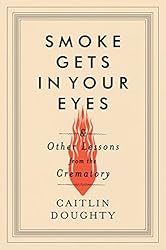
 June brings summer to our doorstep, along with National Safety Month. This year’s theme encourages us to “Keep Each Other Safe.” One of the best ways to keep each other safe is to “Stand Up to Falls.”
June brings summer to our doorstep, along with National Safety Month. This year’s theme encourages us to “Keep Each Other Safe.” One of the best ways to keep each other safe is to “Stand Up to Falls.”
Adults 65 and older are the most vulnerable for falls and falls are the number one cause of injuries and injury deaths in this age bracket. As 10,000 Baby Boomers turn 65 each day, more and more of us will have family, friends, and neighbors who age into this high risk pool.
Older adult falls are truly a growing problem. Although many seniors are more active and living longer, more than 1 in 4 report falling. Emergency departments treat over 3 million older Americans for falls each year while direct medical expenses add up to more than $31 billion annually. As falls and fall injuries are increasing, chances have also increased that you know someone who has fallen this past year.
What can you do to Stand Up to Falls?
Fortunately, falls are preventable and we can all take steps to protect the health and wellbeing of older Americans. To assist, the Centers for Disease Control and Prevention (CDC) is committed to helping older Americans age safely and without injury. This means ensuring that older adults and those who care for them have the tools and resources needed to assess their fall risk and information on how to effectively reduce that risk.
CDC encourages all older Americans to:
 Speak Up – Falls can cause severe injury and loss of independence. Therefore it’s important to talk openly with your healthcare provider about falls and your health goals. Healthcare providers are well positioned to screen for fall risk, using evidence-based tools such as those included in the Stopping Elderly Accidents, Deaths & Injuries (STEADI) initiative, assess modifiable fall risk factors (e.g., poor balance, the use of certain medications, vision impairment), and to offer effective strategies to help their patients prevent a fall so that they can meet their health goals.
Speak Up – Falls can cause severe injury and loss of independence. Therefore it’s important to talk openly with your healthcare provider about falls and your health goals. Healthcare providers are well positioned to screen for fall risk, using evidence-based tools such as those included in the Stopping Elderly Accidents, Deaths & Injuries (STEADI) initiative, assess modifiable fall risk factors (e.g., poor balance, the use of certain medications, vision impairment), and to offer effective strategies to help their patients prevent a fall so that they can meet their health goals.
If you are a friend or caregiver of an older person, encourage them to speak up and talk to their doctor if they have fallen, feel unsteady, or worry about falling. They should also ask about vitamin D supplements for improved bone, muscle, and nerve health. CDC has fall prevention resources available for older adults and those who care for them, such as the brochures, Family Caregivers: Protect Your Loved Ones from Falling and Stay Independent: Prevent Falls.
Make Your Home Safe – Most falls happen at home, so it’s important for older adults to check their homes – inside and out – for safety. CDC offers a brochure, Check for Safety that includes a fall prevention checklist. This list contains simple preparedness actions that often get overlooked:
- Get rid of things you could trip over.
- Add grab bars inside and outside of your tub or shower and next to the toilet.
- Put railings on both sides of stairs.
- Make sure your home has lots of light by adding more or brighter light bulbs.
Keep Moving – Older adults can reduce their risk of falling by improving their balance and strengthen their legs. CDC encourages older adults to keep moving and stay active with evidence-based activities like Tai Chi. Exercise and movement can also make you feel better and more confident. Check with your healthcare provider about the best type of exercise program for you or your loved one.
Falls affect us all—whether personally or someone we love or care about. Encourage older adults you know to take steps toward living longer and healthier lives. Let’s continue to keep each other safe during National Safety Month and stand up to falls!
Resources


 June brings summer to our doorstep, along with National Safety Month. This year’s theme encourages us to “Keep Each Other Safe.” One of the best ways to keep each other safe is to “Stand Up to Falls.”
June brings summer to our doorstep, along with National Safety Month. This year’s theme encourages us to “Keep Each Other Safe.” One of the best ways to keep each other safe is to “Stand Up to Falls.” Speak Up – Falls can cause severe injury and loss of independence. Therefore it’s important to talk openly with your healthcare provider about falls and your health goals. Healthcare providers are well positioned to screen for fall risk, using evidence-based tools such as those included in the
Speak Up – Falls can cause severe injury and loss of independence. Therefore it’s important to talk openly with your healthcare provider about falls and your health goals. Healthcare providers are well positioned to screen for fall risk, using evidence-based tools such as those included in the 
 There’s a big puzzle growing out of that startling new research showing that the death rate among white Americans age 45-54, especially the less-educated, has been rising since 1999. This even though the death rate
There’s a big puzzle growing out of that startling new research showing that the death rate among white Americans age 45-54, especially the less-educated, has been rising since 1999. This even though the death rate



